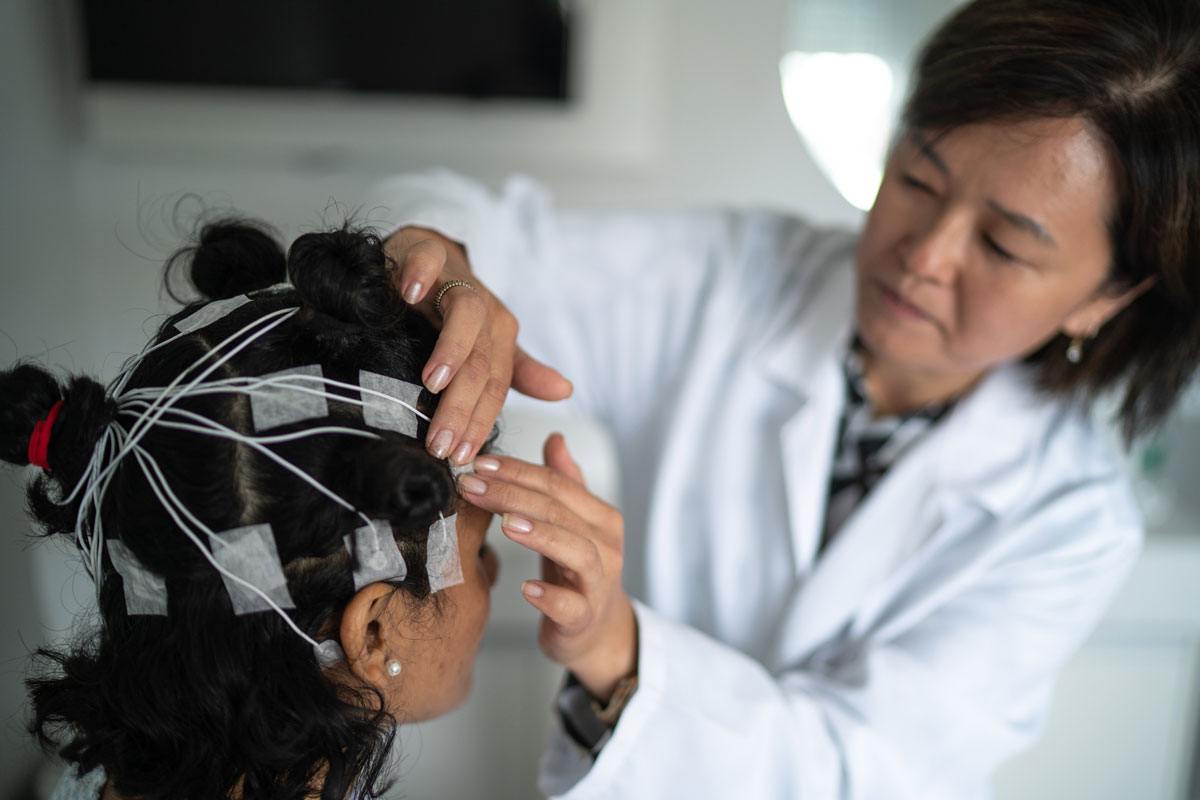
A new study shows that sleep spindles, brief bursts of brain activity occurring during one phase of sleep and captured by EEG, may regulate anxiety in people with post-traumatic stress disorder (PTSD).
The study shines a light on the role of spindles in alleviating anxiety in PTSD as well as confirms their established role in the transfer of new information to longer-term memory storage. The findings challenge recent work by other researchers that has indicated spindles may heighten intrusive and violent thoughts in people with PTSD.
The final draft of the preprint publishes in Biological Psychiatry: Cognitive Neuroscience and Neuroimaging on May 3, 2023.
These findings may be meaningful not only for people with PTSD, but possibly for those with anxiety disorders.
"These findings may be meaningful not only for people with PTSD, but possibly for those with anxiety disorders," said senior author Anne Richards, MD, MPH, of the UCSF Department of Psychiatry and Behavioral Sciences, the Weill Institute for Neurosciences and the San Francisco VA Medical Center. "There are non-invasive ways that might harness the benefits of this sleep stage to provide relief from symptoms."
The researchers enrolled 45 participants who had all experienced combat or noncombat trauma; approximately half had moderate symptoms of PTSD and the other half had milder symptoms or were asymptomatic. The researchers studied the spindles during non-rapid eye movement 2 (NREM2) sleep, the phase of sleep when they mainly occur, which comprises about 50% of total sleep.
Violent Images Used to Test Brain Processing
In the study, participants attended a "stress visit" in which they were shown images of violent scenes, such as accidents, war violence, and human and animal injury or mutilation, prior to a lab-monitored nap that took place about two hours later.
Anxiety surveys were conducted immediately after exposure to the images as well as after the nap when recall of the images was tested. The researchers also compared anxiety levels in the stress visit to those in a control visit without exposure to these images.
The researchers found that spindle rate frequency was higher during the stress visit than during the control visit. "This provides compelling evidence that stress was a contributing factor in spindle-specific sleep rhythm changes," said first author Nikhilesh Natraj, PhD, of the UCSF Department of Neurology, the Weill Institute for Neurosciences and the San Francisco VA Medical Center. Notably, in participants with greater PTSD symptoms, the increased spindle frequency after stress exposure reduced anxiety post-nap.
Sleeping Meds, Electrical Stimulation May Promote Sleep Spindles
In the study, naps took place shortly after exposure to violent images - raising a question about whether sleep occurring days or weeks after trauma will have the same therapeutic effect. The researchers think this is likely, and point to interventions that could trigger the spindles associated with NREM2 sleep and benefit patients with stress and anxiety disorders.
Prescription drugs, like Ambien, are one option that should be studied further, "but a big question is whether the spindles induced by medications can also bring about the full set of brain processes associated with naturally occurring spindles," said Richards.
Electrical brain stimulation is another area for more study, researchers said. "Transcranial electrical stimulation in which small currents are passed through the scalp to boost spindle rhythms or so-called targeted memory reactivation, which involves a cue, like an odor or sound used during an experimental session and replayed during sleep may also induce spindles," said Natraj.
"In lieu of such inventions, sleep hygiene is definitely a zero-cost and easy way to ensure we are entering sleep phases in an appropriate fashion, thereby maximizing the benefit of spindles in the immediate aftermath of a stressful episode," he said.
The researchers' next project is to study the role of spindles in the consolidation and replay of intrusive and violent memories many weeks after trauma exposure.
Co-authors: Thomas C. Neylan, MD, and Daniel H. Mathalon, PhD, MD, of the San Francisco VA Medical Center and UCSF; Leslie M. Yack, Thomas J. Metzler, Samantha Q. Hubachek, Cassandra Dukes, and Nikhila S. Udupa of UCSF; and Steven H. Woodward, PhD, of the Palo Alto VA Medical Center.
Funding: Anne Richards, MD, MPH, received a VA Career Development Award by the U.S. Department of Veterans Affairs (5IK2CX000871-05).
About UCSF Health: UCSF Health is recognized worldwide for its innovative patient care, reflecting the latest medical knowledge, advanced technologies and pioneering research. It includes the flagship UCSF Medical Center, which is a top-ranked specialty hospital, as well as UCSF Benioff Children's Hospitals, with campuses in San Francisco and Oakland, Langley Porter Psychiatric Hospital and Clinics, UCSF Benioff Children's Physicians and the UCSF Faculty Practice. These hospitals serve as the academic medical center of the University of California, San Francisco, which is world-renowned for its graduate-level health sciences education and biomedical research. UCSF Health has affiliations with hospitals and health organizations throughout the Bay Area. Visit www.ucsfhealth.org






